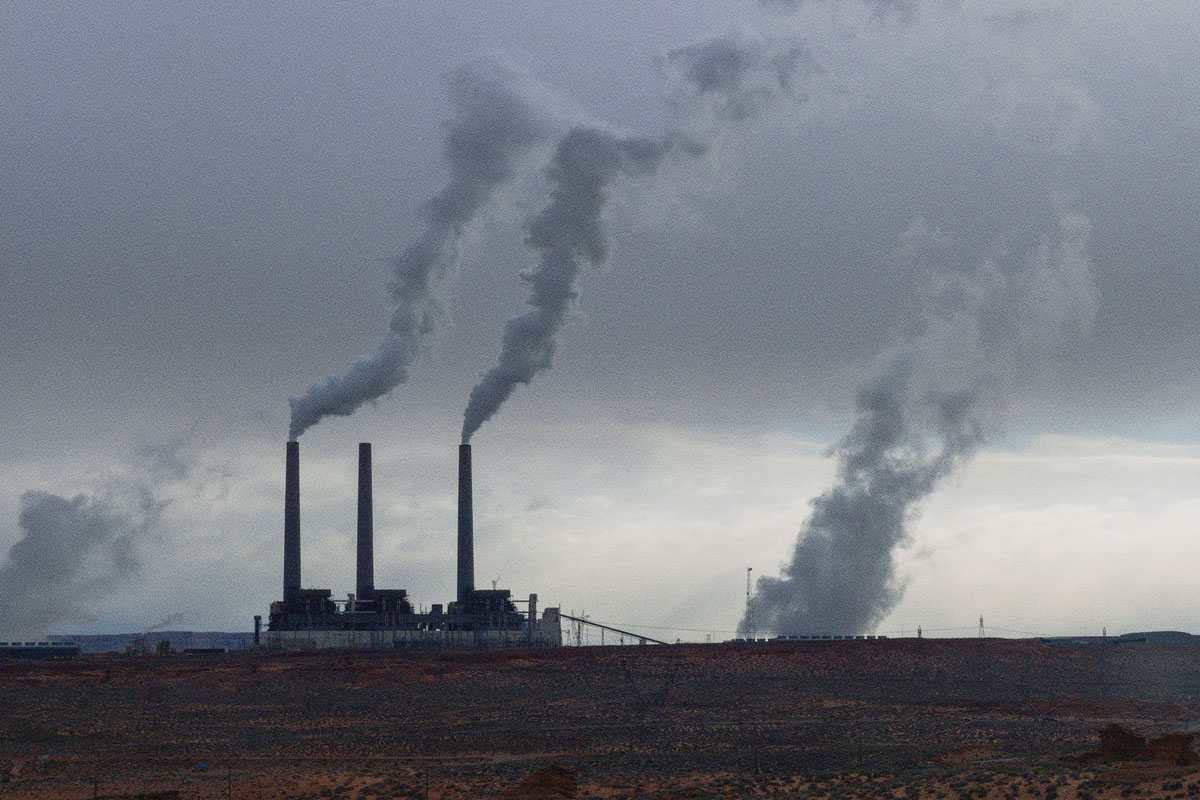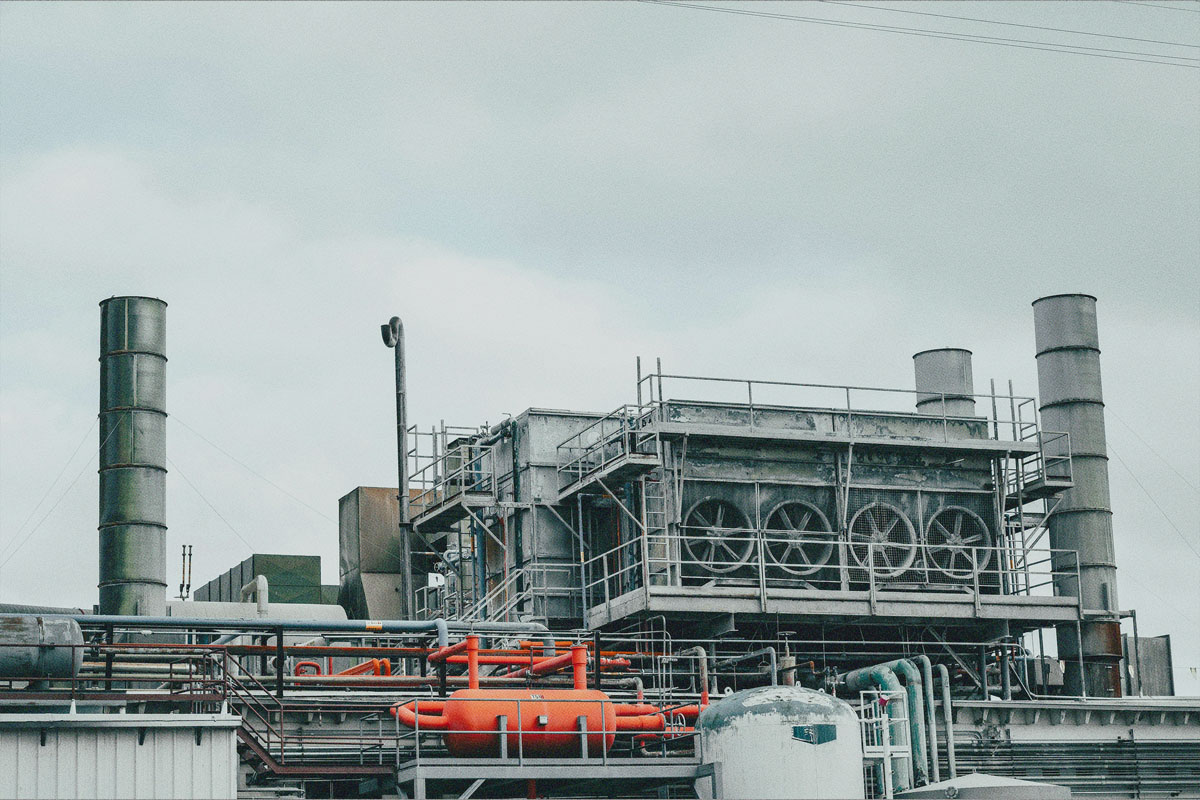 READ HABITABLE’S NEW REPORT
READ HABITABLE’S NEW REPORT
Learn about the United Nations’ General Comment No. 26, which provides guidance on implementing the UN Convention on the Rights of the Child regarding children’s rights and the environment, focusing on the impact of toxic substances.

This article provides an overview of the global plastic waste crisis, highlighting the environmental impact of plastic pollution and the ongoing efforts by the UN to create a legally binding international agreement to address the issue.

This news article reports that the United Nations has declared the ongoing PFAS contamination of North Carolina’s Cape Fear watershed a violation of residents’ right to a clean and safe environment, urging the Environmental Protection Agency to hold the polluters accountable.

This article discusses the latest update to the planetary boundaries model, highlighting the inclusion of numerical guideposts for each boundary and emphasizing the interconnected factors influencing Earth’s habitability beyond climate change.

The Lower Sioux nation are pioneering a first-of-it’s-kind green experiment with a manufacturing campus that integrates vertical hemp growing, hempcrete insulation processing, and healthy home construction, aiming to address housing and job shortages while reclaiming sovereignty.
Overwhelming evidence suggests our health and well-being are significantly impacted by the conditions in the environment where we are born, live, learn, work, and play, with some suggesting that our zip codes are better predictors of health than our genetic code.
Also referred to as social determinants of health , these conditions range from access to and quality of education, transport, and health care services to housing conditions and the toxics and pollutants we are exposed to in the neighborhoods we live in.
While definitions may vary around what these conditions are and which should be prioritized, there is general consensus that:
- These conditions exist because of decision-making processes, policies, structures, and practices designed and implemented by humans;
- These conditions create inequities in health, disproportionately impacting low-income families, families living with incomes below the federal poverty level, and people of color, and;
- Cross-sector collaboration is needed to deliver the highest standards of health for all, with special attention given to the needs of those who are at greatest risk.

In alignment with efforts tackling the root causes of health inequities, Healthy Building Network (HBN) entered into a partnership with United Renters for Justice (IX), a nonprofit working to transform the Minneapolis housing system, to reduce tenant exposures to toxic chemicals used in building products. Funded through an Environmental Assistance grant by the Minnesota Pollution Control Agency (MPCA), this collaborative project prioritized toxic exposure reduction in areas designated to be of environmental justice (EJ) concern by the MPCA. EJ concern areas include tribal land and census tracts with higher concentrations of low-income residents and people of color – communities that are disproportionately impacted by toxic chemical exposures and other forms of pollution.
This collaboration provided the unique opportunity to embrace the perspective of tenants in the co-creation of resources to help them make informed decisions about the products used in their housing units and common areas. Specifically, this meant designing resources that would leverage IX’s organization and mobilization skills as well as the structure of a recently established tenant cooperative, “A Sky Without Limits.” Also, it meant increasing information accessibility, for example, through the use of non-technical language and making the resources available in both English and Spanish.
Tenant organizations and other stakeholders can access HBN’s healthier building product guidance at informed.habitablefuture.org and by watching this 10-minute seminar video:
Watch the Seminar (English)
Ver el Seminario (Español)
This high-level, 10-minute recording can be used to educate the general public (e.g., tenant meetings) about the importance of avoiding toxic products. It begins by breaking down myths and misconceptions around the perceived hazards and safety of natural and synthetic chemicals and discusses how toxic products impact individuals and families, especially children, along the lifecycle of products.
By empowering the people most affected by toxic chemical exposures to advocate for and create change in their living conditions, this project creates avenues for creating a safer environment for all. Anyone who influences product purchasing decisions – including manufacturers, building owners, managers, developers, architects, investors, policy makers, and consumers – has the power and responsibility to reduce health inequities for those using or exposed to those products every day. This includes residents, workers, installers, and the communities that surround the facilities where these materials are processed and disposed of. By making material health a priority in your decision-making processes, you’ll be joining efforts to tackle the root causes of health inequities in communities around the world. Visit informed.habitablefuture.org to learn how our building product guidance can help you make better material choices.
Insulation selection has generally focused on prioritizing a product’s ability to reduce greenhouse gas (GHG) emissions from building operation, though increasingly considerations include GHG emissions from a material’s life cycle, from manufacture through disposal (known as embodied carbon).
However, this singular focus on GHGs fails to account for other harmful emissions associated with the life cycle of these materials, including toxic pollution that disproportionately burdens Black, Indigenous, people of color (BIPOC), and/or low-income communities. As billions of pounds of new insulation is being installed in buildings each year, failure to address these toxic impacts will mean that building decarbonization efforts will further entrench environmental injustice.
Healthy Building Network (HBN) joined NRDC and Energy Efficiency for All in an analysis of the life cycle chemical and environmental justice impacts of two popular building insulation materials—fiberglass and spray polyurethane foam (SPF).

The Findings
The analysis found that both SPF and fiberglass release pollution into BIPOC communities over their life cycles, but SPF carries a much heavier pollution burden. The combined population surrounding the facilities that manufacture the key ingredient of SPF has almost double the percentage of Latino people compared to the U.S. overall. These facilities reported releasing an average of about 560,000 pounds of related hazardous chemicals every year and have a history of noncompliance with EPA regulations. Our previous research also found that spray foam has significant hazardous chemical concerns during installation and use in buildings.
Regarding embodied carbon, while the specifics vary, studies (such as here, here, and here) consistently show that closed cell SPF has significantly higher embodied carbon per R-value than fiberglass insulation. Further, SPF is made from almost entirely fossil fuel-derived inputs, with no recovery, reuse, or recycling of the material—necessitating continued extraction and refining of fossil fuels to produce this insulation product. Overall, comparing material health, environmental justice, and embodied carbon impacts between SPF and fiberglass, fiberglass is preferable on all accounts.
However, fiberglass manufacturing still releases hazardous pollution into communities who are disproportionately BIPOC and/or low income, and many fiberglass facilities have exhibited regular noncompliance with EPA regulations. Fiberglass manufacturers can reduce and eliminate such pollution by using less hazardous chemistries. For example, all four U.S. manufacturers reported reduced releases of formaldehyde by changing to safer binder formulations for many of their products between 2002 and 2015.
Why It Matters
As laid out in the Equitable and Just National Climate Platform:
“To achieve our [climate] goals, we will need to overcome past failures that have led us to the crisis conditions we face today. Past failures include the perpetuation of systemic inequalities that have left communities of color, tribal communities, and low-income communities exposed to the highest levels of toxic pollution and the most burdened and affected by climate change. The defining environmental crisis of our time now demands an urgency to act. Yet this urgency must not displace or abandon the fundamental principles of democracy and justice…Unless justice and equity are central components of our climate agenda, the inequality of the carbon-based economy will be replicated in the new economy.”
To truly be part of a just and equitable transition to a clean economy, climate solutions like building insulation must advance the well-being of BIPOC and low-income communities. We recommend that embodied chemical and environmental justice impacts drive material decision-making on par with consideration of GHG emissions.
Your Action Today = Healthier, More Just Future
In general, there are significant opportunities to improve the life cycle of building insulation materials through avoiding hazardous chemicals, implementing circularity, and taking other actions stemming from the principles of green chemistry and environmental justice.
Manufacturers and policymakers should advance transparency about what is in a product, how and where it is made, and the hazardous releases that occur throughout its life cycle. In the meantime, those who choose building materials can start by avoiding hazardous chemicals in a product’s content to help protect not only building occupants and installers, but also others impacted by those hazardous chemicals throughout the supply chain. Our InformedTM product guidance can help you choose safer materials.
All stakeholders–including manufacturers, policymakers, and those who choose building materials–should support the leadership of frontline communities and make changes to their own practice so that all families have healthy places to live, learn, work, and play.

PFAS are used in paints, food packaging and even cosmetics. We know they are in our water, air, soil and bodies – but less about how they will affect us.
Healthy Building Network is proud to announce that CEO Gina Ciganik was recognized as a 2021 Women in Sustainability Leadership Award winner!
The awards were created to identify, advance, and celebrate women working in sustainability. Awardees include dedicated women making significant positive changes to the planet, demonstrating bravery in the workplace, and mentoring the next group of women leaders.

Gina joins a group of 85 previous recipients including former Secretary of State Hilary Clinton and leaders from Fortune 500 companies to startups, nonprofits to industry associations, and more.
“I am proud to receive this award and represent the nonprofit sector,” Gina said. “I chose a mission-based career to ensure I work to solve the most intractable problems, while serving as an ally to and working together with underrepresented and marginalized communities. I’m fortunate to have the privilege, position, and networks to work toward improving the health of people and the planet, leaving no person or place behind.
The 2021 winners were announced in a virtual ceremony. The full list of awardees is below.
- Jessica Aldridge, Director of Sustainability and Zero Waste Programs, Athens Services
- Mona Benisi, Executive Director of Morgan Stanley; Head of Sustainability, Global Real Assets, Morgan Stanley Investment Management
- Dr. Marilyn Black, Vice President and Senior Technical and Strategic Advisor, Underwriters Laboratories Inc.
- Sonja Bochart, Regenerative Design, Sustainability and Biophilia Consulting
- Christine Brunel-Ligneau, Sustainable Agriculture Strategy, Bayer AG CropScience Division
- Gina Ciganik, Chief Executive Officer, Healthy Building Network
- Robyn Eason, Long-Range Planning & Sustainability Manager, City of West Hollywood
- Dr. Jennifer Holmgren, CEO, LanzaTech; Director and Chair, LanzaJet, Inc.
- Rachel Hodgdon, President & CEO, International WELL Building Institute (IWBI)
- Elaine Hsieh, Co-Founder, Head of Corporate Partnerships and Marketing, Third Derivative (D3)
Congratulations, Gina!
Healthy Building Network (HBN) and 100+ organizations stand united behind the new Louisville Charter for Safer Chemicals, a roadmap for transforming the chemical industry to one that is no longer a source of greenhouse gas emissions and significant human and environmental health harms.
The goal of the updated charter is to protect human health and the environment and achieve environmental justice for all who experience disproportionate impacts from cumulative chemical sources, including people of color, low-income people, Tribes and Native/Indigenous communities, women, children, and farmworkers.

The original Charter was created in 2004; at that time, HBN joined a broad coalition of grassroots, labor, health, and environmental justice groups in an extensive process initiated by community organizations in Louisville, KY. Louisville’s “Rubbertown” area hosted 11 industrial facilities that released millions of pounds of toxic air emissions every year. The Charter was named in honor of this city and all of the communities across the nation exposed to toxic chemical contamination—starting with the people who are harmed first and worst. We participated in the 2021 update process, supporting the efforts of the most heavily impacted communities to more explicitly address the chemical industry’s massive contribution to the climate crisis, and the need to advance environmental justice in communities who are disproportionately impacted.
The Louisville Charter is a unifying guide for everyone working to ensure that toxic chemicals are no longer a source of harm, from local and national policy-makers and labor organizers, to health care workers and concerned community members, to committed leaders in the building industry. It is meant to be versatile and used in a wide variety of contexts for one overarching purpose: to overhaul chemical policies in favor of safety, health, equity, and justice, and avoid false solutions that simply shift harms to other people and places.
HBN is proud to be a signatory of the Charter and join this diverse and intersectional community of partners demanding urgent action to protect, strengthen, and restore our most vulnerable communities.

To learn more about the Louisville Charter for Safer Chemicals and its ten platform planks, visit www.louisvillecharter.org.

 Equity
Equity Pollution
Pollution Climate Change
Climate Change